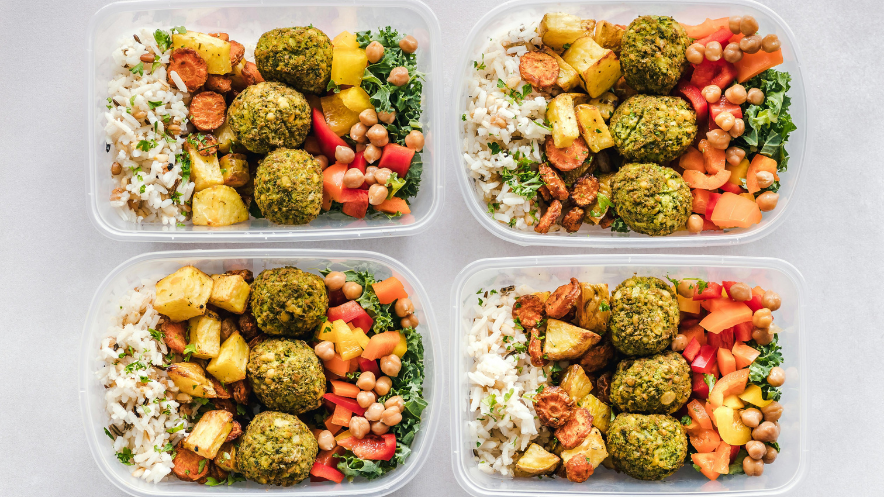Crafting a Healthy Eating Routine

Maintaining a healthy eating routine is essential for overall well-being and optimal health. It involves making conscious choices about the foods we consume and establishing a balance that meets our nutritional needs. By incorporating healthy eating habits into our daily lives, we can experience a range of benefits that contribute to a healthier and happier lifestyle.
Importance of a healthy eating routine
Crafting a healthy eating routine is important for several reasons. Firstly, it provides our bodies with the necessary nutrients to function properly. A well-balanced diet ensures that we get the right amount of vitamins, minerals, proteins, carbohydrates, and fats. Secondly, it helps in maintaining a healthy weight, reducing the risk of obesity, and preventing chronic diseases such as heart disease, diabetes, and certain types of cancer. Lastly, it boosts our energy levels, improves our mood, and enhances mental clarity and focus.
Benefits of maintaining a healthy diet
Maintaining a healthy diet brings numerous benefits to our overall well-being. Firstly, it strengthens our immune system, making us more resilient to illness and infection. Secondly, it promotes healthy digestion and prevents digestive problems such as constipation and bloating. Thirdly, it supports healthy brain function, improving cognitive abilities such as memory and concentration. Additionally, a healthy diet can enhance sleep quality, promote healthy skin, and increase longevity. By consistently maintaining a healthy eating routine, we can experience improved physical and mental well-being, leading to a happier and more fulfilling life. [1][2][3][4]
Set Goals and Plan Ahead
https://holisticwellnesswave.com/index.php/2023/11/27/the-power-of-nutrition-in-type-1-diabetes-management/
Define your dietary goals
Crafting a healthy eating routine starts with setting clear and achievable goals. Take some time to reflect on why you want to eat healthier and what specific changes you want to make. Are you looking to lose weight, increase energy levels, or improve your overall well-being? Knowing your goals will help guide your actions and keep you motivated along the way.
Create a weekly meal plan
Planning your meals in advance can make a significant difference in your ability to stick to a healthy eating routine. Dedicate a few hours each week to select your meals, purchase the necessary ingredients, and prepare some food items. By doing this, you’ll have healthier options readily available and be less tempted to opt for convenient but less nutritious choices like fast food. Consider using a meal planning app or simply write down your meals and recipes to stay organized and on track.
By defining your dietary goals and creating a weekly meal plan, you’ll be well on your way to establishing a healthy eating routine. These simple yet effective strategies can help you make positive changes in your diet and pave the way for a healthier, happier life. Remember, starting with small, short-term goals and celebrating your progress along the way will keep you motivated and set you up for long-term success. [5][6][7][8]
Shop Smart
Make a grocery list
One essential step in crafting a healthy eating routine is to make a grocery list. By planning out your meals and writing down all the ingredients you need, you can avoid unnecessary purchases and stay focused on your dietary goals. Take the time to divide your list into sections, corresponding to the different sections of the grocery store. This way, you can navigate through the aisles more efficiently and avoid any temptations that might derail your healthy eating plan. Remember to include a variety of nutrient-rich foods like fruits, vegetables, whole grains, and lean proteins to ensure a well-balanced diet.
Choose healthy options at the store
When you’re at the grocery store, it’s important to look for foods that are lower in fat, saturated fat, cholesterol, and sodium. These nutrients can increase the risk of certain chronic diseases, so aim to eat less than 100% of the Daily Value for these. Instead, focus on foods that are high in dietary fiber, vitamins, and minerals. Read and compare Nutrition Facts labels to make informed choices. Consider purchasing store or generic brands, as they can often be just as nutritious as their brand-name counterparts but at a lower cost.
By making a grocery list and choosing healthy options at the store, you are taking proactive steps toward creating a healthy eating routine. These simple strategies can help you make better choices and lead to a happier and more nourished you. Stay committed to your dietary goals, and remember to celebrate your progress along the way. [9][10][11][12]
Meal Preparation
Preparing meals in advance
One of the key strategies for crafting a healthy eating routine is meal preparation. By setting aside time each week to plan and prepare your meals in advance, you can save time, money, and ensure that you have nutritious options readily available. Start by creating a monthly calendar or spreadsheet where you can record your meal ideas, favorite recipe sites, and food shopping lists. Collect healthy recipes that align with your dietary goals and consider specific meals or foods for different days of the week.
There are various meal prep methods you can choose from, such as individually portioned meals or ready-to-cook ingredients. Individually portioned meals involve preparing fresh meals and portioning them into grab-and-go containers to be refrigerated and eaten over the next few days. This method is particularly handy for quick lunches. On the other hand, ready-to-cook ingredients involve prepping the required ingredients for specific meals ahead of time, which can help cut down on cooking time.
Portion control and mindful eating
Crafting a healthy eating routine also involves practicing portion control and mindful eating. Understanding appropriate portion sizes and being mindful of your hunger and fullness cues can help you maintain a balanced diet and prevent overeating. When preparing your meals, be mindful of the portion sizes and aim to include a variety of nutrient-rich foods like fruits, vegetables, whole grains, and lean proteins.
Furthermore, consider incorporating mindfulness into your eating habits. Slow down and savor each bite, paying attention to the flavors, textures, and feelings of satisfaction as you eat. Mindful eating can help you develop a healthier relationship with food and improve your overall well-being.
By incorporating these practices into your daily routine, you can create a healthy eating routine that supports your nutrition goals and promotes overall wellness. It may take some time and effort to establish these habits, but the benefits to your health and well-being are well worth it. Stay committed to your goals, celebrate your progress, and enjoy the journey to a healthier you. [13][14][15][16]
Balancing Macronutrients
Understanding carbohydrates, proteins, and fats
When crafting a healthy eating routine, it’s important to understand the role of macronutrients in our diet. Carbohydrates, proteins, and fats are the three main macronutrients that provide our bodies with the necessary fuel to thrive physically and mentally. Carbohydrates are the body’s primary source of energy and can be found in foods like grains, fruits, and vegetables. Proteins play a vital role in building and repairing tissues and can be found in foods like lean meats, dairy products, and legumes. Fats are essential for various bodily functions and can be found in foods like avocados, nuts, and oils. By understanding the importance of these macronutrients and incorporating them into our meals consciously, we can ensure that we provide our bodies with the necessary fuel to thrive.
Incorporating a variety of nutrients into meals
Achieving a balanced diet involves incorporating a variety of nutrients into our meals. It’s important to aim for a combination of carbohydrates, proteins, and fats in each meal to ensure optimal health and performance. When planning our meals, we should consider portion sizes and the specific nutrient needs of our bodies. This is especially important if we have goals of weight loss or changing body composition. By consciously incorporating sources of protein, carbohydrates (ideally starch and fiber), and fats into our meals, we can create balanced and nutritious meals that support our overall well-being.
Conclusion
In conclusion, crafting a healthy eating routine involves understanding the role of macronutrients and incorporating a variety of nutrients into our meals. By consciously balancing our intake of carbohydrates, proteins, and fats, we can provide our bodies with the necessary fuel to thrive physically and mentally. By considering portion sizes and incorporating nutrient-rich foods, we can create balanced and nutritious meals that support our health and wellness goals. [17][18][19][20]




